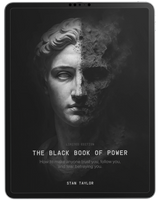Perhaps it might be easy for you to imagine a moment of intense, paralyzing uncertainty. Many of us will have experienced this feeling in everyday life. It might have been when you were debating to say yes to a new job, or the moments before becoming a parent, wondering how you will adapt. It's almost a feeling of an emotional abyss.
Apply this to a toxic relationship, and that feeling can come after you have just endured a period of punishing silence, aggressive criticism, or outright emotional cruelty from the person whom you most likely love the most deeply. As a result, your system is flooded with stress. Your mind spins into a desperate spiral of seeking a logical justification for the chaos it's experiencing.
Then, suddenly, almost as suddenly as the spiral began, the tension breaks. There is a small, unexpected gesture of affection. It might be a tender touch, a single, perfectly aimed apology, or a brief moment of the idealized connection that initially drew you into the relationship.
The relief that washes over you is overwhelmingly positive. What feels like peace is actually a surge of dopamine so strong that it momentarily erases the preceding conflict.
In that moment, you feel so intensely loyal and devoted to your partner because of the intense drama you just lived through together. You mistake the cessation of chaos and pain for intimacy. You believe that this brief return to a loving relationship validates your dedication and proves that the "real" relationship is worth fighting for.
In reality, you're experiencing a deliberate behavioral structure and a highly efficient form of psychological engineering. In modern society, it's a more common phenomenon known as trauma bonding. It's a difficult relationship or poor communication taken to its extreme. A trauma-bonded toxic relationship is a complex, biologically reinforced attachment system that uses fear and confusion to create dependence.
And it's worth noting that a trauma-bonded relationship isn't limited to romantic partners. It can be parents, wider family members, or friends.
What Trauma Bonding Really Means
If you ever experience a trauma bond, it's an intense, highly addictive emotional attachment that forms from cycles of abuse and intermittent reinforcement. The cycle of damage causes individuals to create a strong, complex, and protective connection to their abuser.
The clinical work of Patrick Carnes led to the origin of the term. He described it as a pattern of calculated misuse of fear, excitement, sexual feelings, and sexual physiology that traps another person. A trauma bond is a clinical diagnosis that focuses on the perpetrator's strategic exploitation. Fundamentally, it's a power maneuver.
Trauma bonding is not to be confused with conventional toxic relationships, although the two do often go hand-in-hand. Toxic relationships can be defined as involving codependency or poor boundary setting. Trauma bonding is the clinical definition of a distinct cycle of intense cruelty followed by acts of exaggerated remorse and kindness. Some also liken it to "honeymoon phase" behavior, where everything seems perfect.
The cycle is the perfect psychological fusion involving the victim's most primal need for security and intimacy. It becomes so inextricably linked to the source of their pain. Individuals studying coercive control often use the precise definition of trauma bonding.
To avoid confusion, it's essential to create clear distinctions between trauma bonding and similar concepts such as Stockholm Syndrome. Both involve victims developing emotional connections to their abusers. The difference is that trauma bonding specifically describes the physiological and psychological attachment that develops in long-term, domestic, or intimate settings of cycling abuse.
When analyzing trauma bonding and Stockholm Syndrome, the latter implies that the abuser develops a reciprocal emotional connection to the victim. Contrastingly, more often than not, trauma bonding is purely strategic. It focuses on behavioral control instead of mutual emotion and reinforces the cold, calculated nature of the emotions involved.
It's a pattern of exploitation that aligns perfectly with the principles of control and loyalty manufacturing that I explored in Chapter 8, The Bonding of Souls, of The Black Book of Power.
The Cycle of Abuse and Attachment
Trauma bonding isn't a rare occurrence. It isn't reserved for niche pathologies. Instead, it's an extensive, structural issue that is deeply rooted in prevalent psychological violence. It's easy to understand its scope when you look at the evidence of pervasive coercive control.
A recent meta-analysis examining the prevalence of Intimate Partner Violence (IPV), involving 41 studies and a huge sample size of 14,615 participants, revealed that the overall prevalence of IPV sits at 31%. This somewhat alarming statistic confirms that manipulative and violent relationship dynamics are commonplace.
Data also reveals the central role of psychological warfare in creating these bonds. Of the different types of violence studied, the highest reported type was psychological violence, affecting 33% of respondents. The dominance of this type of violence reveals a critical truth.
The trauma bond is created primarily through manipulation, gaslighting, emotional warfare, and systematic dismantling of the victim's reality. It's not solely through physical threats.
Psychological violence is by far the most dominant issue. It prepares the psychological ground for the bond to take root.
Intermittent reinforcement is key to trauma bonding engineering. The kindness or relief is offered unpredictably, often following a period of withdrawal or cruelty. It's an unpredictable reward that creates a bond that's much stronger than consistent kindness because the brain remains perpetually vigilant. It craves the "win" of reconciliation.
In reality, this is the master manipulator's technique.
Through creating uncertainty, the manipulator ensures that the target uses all their cognitive energy attempting to secure the next "hit" of affection. Ultimately, that leaves no resources available to question the relationship structure itself. The abuser, as the source of the chaos and the temporary resolution, becomes the emotional center of the victim's universe.
Interestingly, the vulnerability to this pattern often begins early in life. Research confirms that early traumatic experiences, particularly in childhood, influence the development of insecure attachment styles and emotional dysregulation. These childhood experiences change the structure and function of the brain. They create a pathway to pathology that manifests in adult relationships.
This intergenerational cycle is difficult to break. The systematic literature review on mothers with trauma histories and their young children, involving 1,321 mothers, revealed that interventions must combine psychotherapeutic, psychoeducational, and skills-training components if this mother-child relationship is to be improved effectively.
You might have heard people on social media or news articles talk about this 'generational trauma' concept that almost became a trend recently.
The trauma bond results in something called gaslighting squared. You doubt your reality, and your most primal, neurochemically driven attachment system leads you to defend the person who is systematically causing the doubt.
10 Signs You're Experiencing Trauma Bonding
You must recognize the symptoms of entanglement to ascertain psychological sovereignty.
The issue, however, with identifying trauma bonding in relationships is that the common signs simply feel like intense, passionate love instead of control. You can characterize these relationships instead by power imbalances, where one person is essentially controlling the other. They often use isolation and high-intensity emotional experiences as a weapon.
As a guide, here are the primary behavioral and emotional markers that indicate a trauma-bonded relationship:
-
Walking on Eggshells: Living in a state of hypervigilance, you are constantly monitoring your words and actions out of fear of triggering your partner's anger or disapproval.
-
Emotional Rollercoaster: The relationship is defined by extreme, rapid switches between adoration, commonly known in modern society as love bombing, and devaluation through criticism and cruelty.
-
Isolation from Support Networks: The abuser has gradually, or sometimes abruptly, severed or minimized your contact with healthy friends and family. They make themselves your sole emotional reference point.
-
Making Excuses for Abuse: You consistently defend, rationalize, or minimize your partner's harmful actions to others. Or, more dangerously, to yourself.
-
Feeling Trapped Despite Wanting to Leave: You have the logical desire to exit the relationship, but feel an overwhelming emotional or physiological inability to actually go through with it. You might rationalize financial or relational constraints.
-
Craving Their Approval: Your self-worth quickly becomes entirely dependent on securing their validation or affection.
-
Losing Your Sense of Self: Your identity, opinions, and interests are absorbed by the need to manage their emotions and behavior. You forget to pursue your own autonomy.
-
Fear Mixed with Devotion: You might feel intense loyalty, protectiveness, and dependence toward the person, even though their unpredictable behavior generates fear.
-
Resignation and Acceptance: You have emotionally adjusted to the cycle of abuse and no longer attempt to fight or resist the dynamic. You seamlessly accept the chaos as "just how things are".
-
Prioritizing Their Needs Above Your Own: You consistently suppress your own distress or needs. Tending to their emotional state feels critical for the survival of the relationship.
The Biology of the Bond
You have to look beyond psychology and to your body's chemistry to understand why the signs of a trauma bond persist.
The trauma bond is biologically reinforced. It turns into a state of physiological addiction. Regardless of the care you receive, your brain has an inherent circuitry to feel constant attachment to caregivers. When trauma is involved, this circuitry is compromised. A pathway initiates that prioritizes survival through connection over self-preservation.
It quickly becomes a cortisol-dopamine rollercoaster. When experiencing conflict, silent treatment, or perceived threat, your body floods with the stress hormones cortisol and adrenaline. This activates the amygdala, the brain's primitive fear center. With that systemic response, your system goes into fight-or-flight mode.
The central trap in the form of relief from this intense stress comes only from the abuser. The reconciliation after the tension causes a dopamine surge. It's a chemical "high" that's deeply addictive because the brain associates the abuser with pain and with the only reliable source of pain cessation.
The result is a neurochemical loop that reinforces the cycle of chaos followed by relief, therefore strengthening the bond instead of weakening it. Your neural pathways learn that chaos is necessary for connection, creating tolerance where you need bigger emotional "hits" to feel relief. This process actually mirrors the pathways seen in substance dependence, hence why we've referenced it as an addiction.
The physiological takeover of the reward system makes the rational choice to leave feel terrifying. Your brain equates separation with the loss of your pain relief mechanism.
Understanding this neurobiology is essential for anyone questioning what is trauma bonding in relationships and why they simply can't walk away.
How to Break the Trauma Bond
It takes a systemic process of psychological and physiological recalibration to break a trauma bond. You must understand that the bond is an engineered structure of power and control and that freedom begins with regaining conscious control.
This process is a central tenet of The Black Book of Power, specifically Part I, The Awakening.
The critical change means moving the focus from the victim's supposed fault to the perpetrator's manipulative behavior. True freedom requires a clinical understanding of your own power profile and acknowledging that these dynamics operate by exploiting universal human vulnerabilities.
Reclaiming Self-Assessment and Autonomy
Where possible, begin by engaging in structured self-reflection to map these toxic dynamics.
I believe that recognizing the patterns of shadow power is essential. For example, the assessment tools that align with Judith Herman's foundational model for complex trauma recovery emphasize three phases:
-
Safety
-
Remembrance (processing the trauma)
-
Reconnection (re-establishing healthy relationships)
The goal of self-assessment is to identify the precise strings the manipulator is pulling. The primal hungers that I discussed in Chapter 7, The Strings of the Heart, of The Black Book of Power will help you to identify and cut the so-called strings.
Therapeutic Recalibration and No-Contact
Breaking the neurochemical loop requires therapeutic intervention. It must address the cognitive distortions and the physiological addiction. Evidence-based modalities such as Cognitive Behavioral Therapy (CBT), Dialectical Behavior Therapy (DBT), and trauma-focused therapies are excellent therapies to help recovery from a trauma bond.
These approaches help clients understand the relationship dynamics, process the trauma, and develop coping strategies to manage the intense emotional withdrawals caused by the end of the abusive pattern. The therapies involve fundamentally rewiring the brain's reward system by teaching it to find relief and safety in other places.
Perhaps the most essential step, whenever you feel like you physically and practically are able to, is establishing no-contact. Again, another somewhat modern social media term, but one that's crucial for recovering from a trauma bond. You can't escape the trauma when the trauma cycle is still in your life.
The bond thrives on intermittent reinforcement and the reconciliation high. Any contact risks triggering the cortisol-dopamine addiction loop immediately undermine progress.
Still, no-contact isn't exactly easy. Factors like fear, financial dependence, or shared children keep trauma-bonded relationships stuck in the cycle. Walking away is often a complex strategic maneuver requiring comprehensive external support. It demands the strength to sit with the fear and emotional withdrawal until the tormented neurobiology begins to settle.
Cultivating the Unmoved Mover
The ultimate solution to the trauma bond is creating psychological invulnerability. This means transforming your empathy from a vulnerability that the manipulator can exploit into a defence mechanism capable of reading others without becoming emotionally compromised.
As I discussed in Chapter 4, The Marble Statue of The Black Book of Power, the goal is to become the unmoved mover. Essentially, you're an individual who can observe psychological manipulation without reacting to its gravitational pull.
The process requires systematically identifying and neutralizing the internal voice, what I call The Parasite, that leads you into submission. That's the voice that's making you psychologically unavailable for predictable exploitation.
One Last Point
Like any powerful clinical term, trauma bonding can be overused and diluted. Sometimes, it simplifies intricate relational difficulties into a single, almost trendy diagnosis. True trauma bonding is characterized by a specific, dangerous cycle involving fear, betrayal, and intermittent reward. It's so much more than any difficult or toxic relationship.
Leaving a trauma bond demands radical honesty about the systems of control operating upon you. Your path is about healing the wounds and claiming sovereignty over your own psychological landscape.
You'll find you need to confront the moral weight of your new understanding: the ability to identify and exploit psychological weaknesses. It doesn't matter if they are being used against you or are latent within your own defensive mechanisms.
This is the final lesson of Chapter 20, The Lonely Dictator, of The Black Book of Power. The constant need for vigilance against the patterns of self-corruption that turn individuals into instruments of their own destruction. The bond is powerful because it is engineered. Your freedom begins the moment you stop craving the chaos and start demanding conscious, uncompromised self-awareness.





